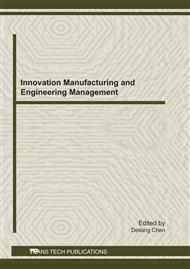p.18
p.23
p.28
p.34
p.40
p.46
p.51
p.56
p.60
Soft-Sensor for Estimation of Lead Slices Thickness in Continuous Casting Process
Abstract:
Continuous casting process is a traditional and widely-used technique in producing the cathode of electric lead. In this paer, soft-sensors based on a support vector regression (SVR, in short)model and an artificial neural networks (ANNs, in short)model respectively, were presented for the estimation of the lead slices thickness in the process.Experiments had been performed on the continuous casting machine to obtain the data used for training and testing of the soft-sensors. For the continuous casting process, the soft-sensors proposed here represents a viable and inexpensive on-line sensors.The study results indicate that a good prediction accuracy of the slice thickess can be provided by the soft-sensors, and even a better performance can be achieved by using pre-processing procedures to the input data, it also shows that the SVR model is an attractive alternative to ANNs model for the soft-sensors, when the number of samples is relatively small.
Info:
Periodical:
Pages:
40-45
Citation:
Online since:
August 2011
Authors:
Price:
Сopyright:
© 2011 Trans Tech Publications Ltd. All Rights Reserved
Share:
Citation:


